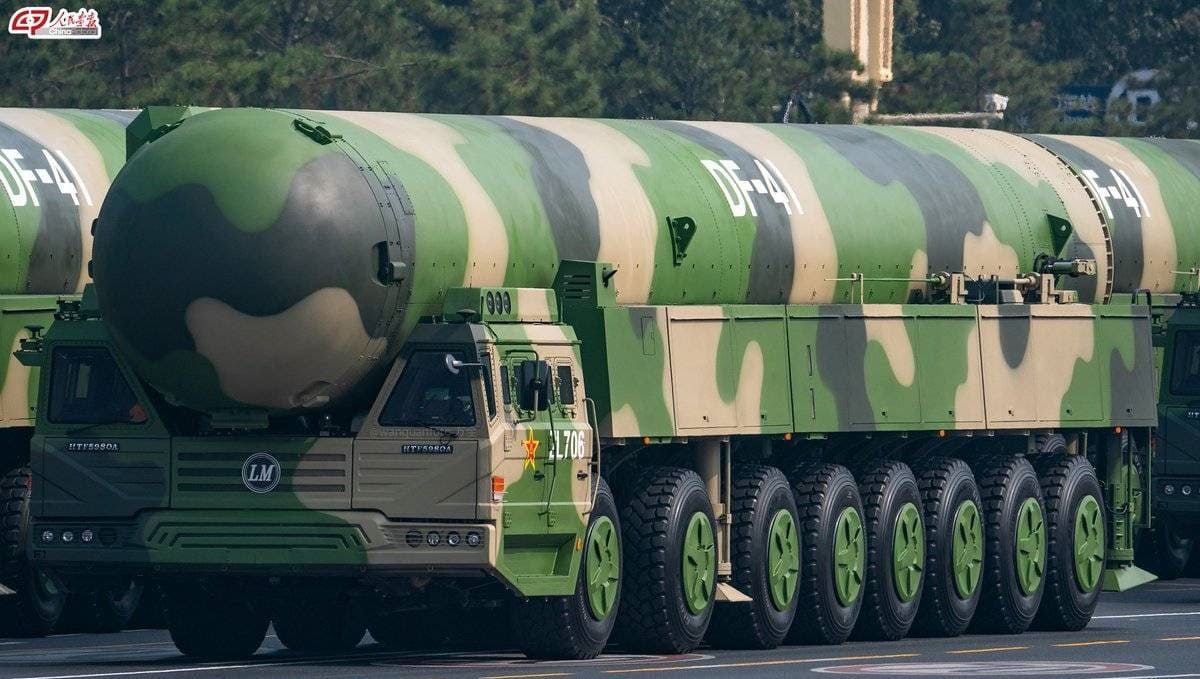Two months ago, inspired in part by the timing of the Victims of Communism Memorial Foundation’s annual China Forum, I wrote a four-part series on China’s ballistic missile arsenal. The series started with an examination of Beijing’s intercontinental ballistic missile types.
Fast-forward to the present month. Last week, my colleague Peter Suciu reported on Pakistan’s joint naval exercises with China. This inspired me to write a piece on Pakistan’s nukes, which are a serious concern to America’s key South Asian ally, India, Meanwhile, Washington Times reporter Bill Gertz wrote a piece explaining that China now has more ICBM launchers than the U.S. All of which makes this a good time for a a follow-up piece on the People’s Liberation Army’s (PLA) ICBM force.
China’s ICBM Arsenal: A Quick Review
The PLA has a total of four different ICBM models. Three of them are ground-based, and the other one is sea-launched. The DF-5 ( short for Dong Feng-5) is the oldest of that country’s homegrown ICBMs, and is also the biggest, with a launch weight of 183,000 kilograms and a payload of 3,000 to 4,000 kg. Next is the DF-41, which has the longest range of the bunch at 15,000 kilometers.
Rounding out the trio is the DF-31, which has an upgraded transporter erector launcher that can traverse unpaved terrain, thus allowing dispersal to a wider variety of concealed positions. This reduces the missile’s vulnerability to countervailing attack.
China’s sea-launched ICBM entrant is the JL-2 (Ju Lang-2), which is essentially the submarine-launched ballistic missile variant of the DF-31. The JL-2 is hosted by the PLA Navy’s half-dozen Type 094 Jin-class nuclear-powered ballistic submarines, each of which can host 12 of these missiles.
China’s Nuclear Expansion
The bottom line from Gertz’s piece is as follows: “’The head of U.S. Strategic Command has informed us that China has surpassed the U.S. in the number of ICBM launchers — this should serve as a wake-up call for the United States,’ said House Armed Services Committee Chairman Mike Rogers of Alabama and Rep. Doug Lamborn of Colorado, chairman of that panel’s strategic forces subcommittee.
“’It is not an understatement to say that the Chinese nuclear modernization program is advancing faster than most believed possible. We have no time to waste in adjusting our nuclear force posture to deter both Russia and China. This will have to mean higher numbers and new capabilities.’”
Gertz also informs us that, “While exceeding the U.S. in the number of ICBM launchers, China’s nuclear forces overall remain smaller than those of the United States in the number of active long-range missiles and in the number of missile warheads.” According to World Population Review, the PRC currently has 350 such warheads available.
Nonetheless, China’s never-ending efforts to expand its nuclear arsenal has to remain a serious concern for the U.S. and our allies in the region.
The Future: How Will America Respond?
Meanwhile, America’s Minuteman III ICBM arsenal is getting old, but there is at least a glimmer of hope. As much as I truly despise U.S. President Joe Biden, everyone gets it right from time to time, and the Biden White House recently released a Nuclear Posture Review that indicates full support for nuclear modernization programs that include the LGM-35A Sentinel ICBM in addition to the B-21 Raider stealth bomber and the Columbia-class submarine.
The question is, will these upgrades and improvements happen soon enough to provide adequate counterweight to China?
I wrapped up my December 2022 article on the Chinese ICBMs with a quote from my friend and fellow USC School of International Relations alumnus Riki Ellison, Chairman of the Missile Defense Advocacy Alliance (MDAA). I daresay that Riki’s profound statement bears repeating now:
“As China continues to rise to power, its ambitions rise alongside it. Today, the People’s Republic of China’s ultimate intentions are clear: It seeks to overthrow the U.S.-led order. In an effort to aggrandize itself, China hopes to dominate the Indo-Pacific region. This contest over the future of the regional and world order between the United States and China may potentially lead to massive conflict. For this reason, China poses the greatest danger to the U.S. national interest.”
Christian D. Orr is a former Air Force Security Forces officer, Federal law enforcement officer, and private military contractor (with assignments worked in Iraq, the United Arab Emirates, Kosovo, Japan, Germany, and the Pentagon). Chris holds a B.A. in International Relations from the University of Southern California (USC) and an M.A. in Intelligence Studies (concentration in Terrorism Studies) from American Military University (AMU). He has also been published in The Daily Torch and The Journal of Intelligence and Cyber Security. Last but not least, he is a Companion of the Order of the Naval Order of the United States (NOUS). In his spare time, he enjoys shooting, dining out, cigars, Irish and British pubs, travel, USC Trojans college football, and Washington DC professional sports. If you’d like to pick his brain in-person about his writings, chances are you’ll be able to find him at the Green Turtle Pasadena in Maryland on Friday nights, singing his favorite karaoke tunes.

